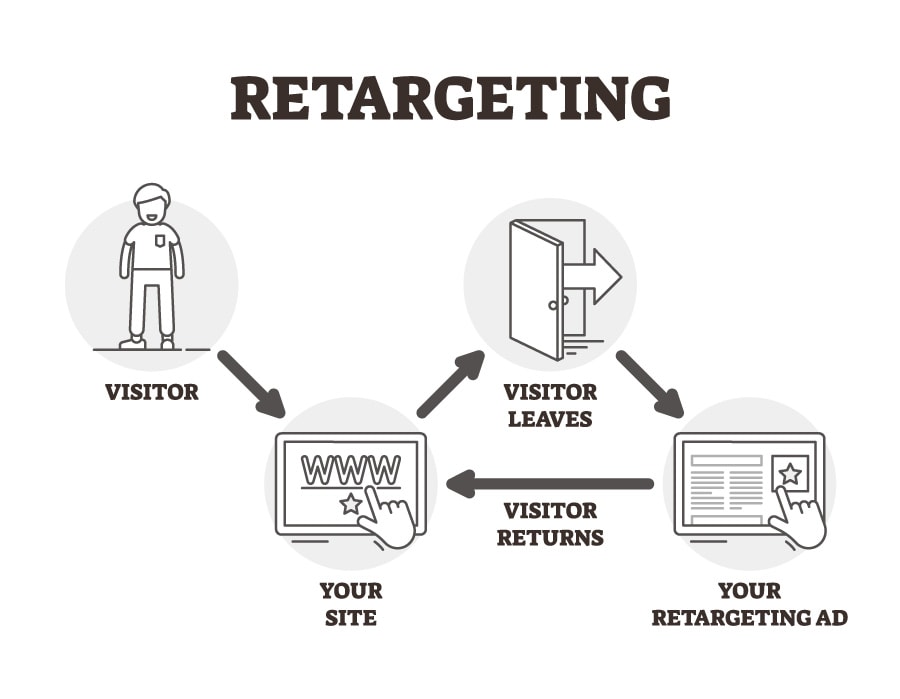Have you ever had a discussion with a friend about a new product or service, only to have an announcement for that exact thing pop up on your social media feed or web cybersurfer shortly later? It might feel like a coexistence, but the verity is that this miracle is a result of targeted advertising, and it’s all thanks to the vast quantities of data that companies are suitable to collect about our online conditioning.
To understand why we see digital advertisements after talking about commodity, we first need to look at how targeted advertising workshop. When we use the internet, we leave behind a trail of data about our interests, preferences, and actions.
Digital Advertising is a ubiquitous presence in our online gests , and it’s not uncommon to see advertisements related to a content we have lately bandied or searched for online. This miracle, known as” Retargeting,” is made possible through the use of eyefuls, which are small pieces of data that are stored on your computer or device when you visit certain websites. In this composition, we’ll claw into how retargeting works, the benefits and downsides of this practice, and some tips for managing your online sequestration.
How Retargeting Works?

Retargeting relies on the use of eyefuls, which are small pieces of data that are stored on your device when you visit certain websites. These eyefuls contain information about your browsing history and can be used to track your online conditioning. When you visit a website that uses retargeting, a cookie is placed on your device. This cookie records the runners you visit and the products you view or purchase.
Latterly, when you visit other websites that are part of the same retargeting network, you will see advertisements related to the products or services you viewed on the original website. For illustration, if you visit a apparel retailer’s website and view a brace of shoes, you might latterly see an announcement for those shoes while browsing a different website.
Retargeting is made possible through the use of announcement networks, which are companies that connect advertisers with websites that are willing to display their advertisements. Advertisers pay these networks to show their advertisements to specific target cult, and the networks use the data collected through eyefuls to serve the advertisements to the applicable druggies.
Benefits of Retargeting
Retargeting has several benefits for both advertisers and consumers. For advertisers, retargeting allows them to reach implicit guests who have formerly expressed an interest in their products or services. This can be particularly useful for businesses that offer products or services that bear a longer deals cycle, as it allows them to stay top- of- mind with implicit guests who may not be ready to make a purchase incontinently.
Retargeting can also be a cost-effective way for advertisers to reach their target cult. Because retargeted advertisements are only shown to druggies who have formerly expressed an interest in a particular product or service, advertisers can be confident that their advertisements are being seen by a applicable and engaged followership. This can lead to advanced conversion rates and a better return on investment.
For consumers, retargeting can be helpful in chancing products and services that they’re interested in. By showing advertisements related to products or services that a consumer has expressed an interest in, retargeting can help them discover new options or find deals on particulars they’re considering copping.
Drawbacks of Retargeting
Still, retargeting isn’t without its downsides. Some people find retargeted advertisements to be protrusive or annoying, particularly if they see the same announcement constantly. Retargeted advertisements can also raise enterprises about online sequestration, as they involve the shadowing of a stoner’s browsing history and the collection of particular data.
There’s also the threat of” announcement fatigue,” where a consumer sees the same announcement so numerous times that they come numb to it and stop paying attention. This can lead to a drop in the effectiveness of retargeted advertisements and eventually harm the advertiser’s return on investment.
Managing Your Online Privacy
Still, there are way you can take to manage your sequestration, If you are concerned about your online sequestration and the use of eyefuls to track your browsing history. One option is to use a cyber surfer extension that blocks or limits the use of eyefuls. You can also acclimate your cyber surfer settings to block or cancel eyefuls, or set your cyber surfer to ask you before accepting eyefuls.
In conclusion
We see digital advertisements after talking about commodity because companies are suitable to track our online exchanges and use this data to target specific advertisements at us. While targeted advertising can be helpful in some cases, it’s important to understand how it works and to take control of your online sequestration by reading and understanding the sequestration programs of the companies you interact with.
If you’re wondering how “Retargeting” has born, read the Evolution of Marketing here.
